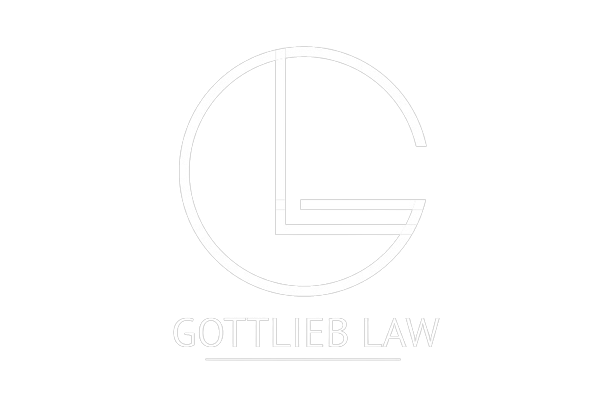Gottlieb Law, PLC provides this article for information purposes only and nothing herein creates an attorney-client relationship. You should not take any actions in reliance on any of the information contained herein without consulting with qualified legal counsel first and reading this article is not a proper substitute for seeking legal advice of your specific situation. Laws change over time and you should seek counsel to discuss any specific legal questions.
Most people dream of owning a home, but many people are surprised to find out the responsibility is accompanied by several challenges. One such challenge that homeowners might encounter is the presence of property liens. These legal encumbrances can shadow your property ownership journey, arising from unpaid debts, disputes, or other financial obligations. However, fear not, for there are solutions at hand. This guide to Arizona property lien removal explains the various types of liens and the typical process of removing them. Our step-by-step approach will help you take back control of your property and financial future, whether you face tax liens, mechanic’s liens, or wrongful liens.
What is a Property Lien?
An unpaid debt can be discharged by placing a lien on a property. This lien serves as collateral for the debt, allowing the creditor to seize the property if the debt is not repaid. Common scenarios leading to property liens include unpaid property taxes, unpaid contractor bills, and unpaid homeowner association dues.
What Effects Do Property Liens Have on Homeowners?
There are serious consequences associated with property liens for homeowners. Your property may be prevented from being sold or refinanced while the lien is outstanding. Public records showing property liens can negatively impact your credit rating. In order to protect economic and property rights, it is essential to address liens promptly.
Can Property Liens Expire in Arizona?
Yes, under certain legal circumstances property liens can expire in Arizona based on the statute of limitations. The law of rules determines the maximum time frame a creditor can legally enforce a debt through a property lien. Arizona’s statute of limitations for property liens varies depending on the debt and circumstances. It’s important to note that the expiration of the statute of limitations does not automatically remove the lien; you may need to take legal action to have it removed.
Types of Property Liens: Understanding Your Situation
Property liens come in various forms, each arising from different circumstances and obligations. Understanding the types of property liens is essential for effectively addressing and removing them. Here, we’ll explore some common types of property liens you might encounter in Arizona:
- Tax Liens: Unpaid taxes can lead to a tax lien on a property. Local governments or tax authorities typically impose these liens. Keeping them unpaid for an extended period can lead to the property’s eventual sale. For instance, if a homeowner in Arizona neglects to pay their property taxes for several years, the county government might place a tax lien on their property, putting it at risk of being auctioned off to satisfy the outstanding tax debt.
- Mechanic’s and Contractor’s Liens: When contractors, subcontractors, or suppliers perform work or provide materials for a property improvement project and aren’t paid, they can place a mechanic’s or contractor’s lien on the property. These liens protect their right to payment for their services or materials. A contractor renovates a kitchen for a homeowner in Arizona. The contractor then isn’t compensated for their work. Mechanic’s liens can lead to legal action or foreclosure of the property.
- Homeowner Association (HOA) Liens: Liens can be placed on properties by homeowner associations after homeowners fail to pay their association dues, charges, or assessments. These liens, known as HOA liens, are a way for HOAs to ensure that community expenses are covered. Consider a situation where a homeowner is in arrears on their HOA dues in Arizona. The association can file a lawsuit and perfect an HOA lien against the property, only allowing the homeowner to sell or refinance the home once the debt is resolved.
- The judgment lien: This lien is imposed by the court on a property owner by a creditor. Judgment liens are often a result of lawsuits related to unpaid debts or legal disputes. Suppose a homeowner loses a legal battle and is ordered to pay a large sum to the other party. In that case, a judgment lien is placed on the homeowner’s property in Arizona after the court judgment is recorded.
- Mortgage Liens: Property liens are placed on properties when a mortgage is taken out to purchase the property. This lien provides loan security and is a consensual lien. Foreclosure is the process of repossessing and selling a property so that the lender can recover their collateral for the loan. For example, suppose a homeowner in Arizona has consistently missed mortgage payments. If that occurs, the lender can commence foreclosure proceedings, resulting in the sale of the property.
- Lis Pendens: A lis pendens is a notice of a pending legal action that might affect the title to a property. It’s often filed when there’s a dispute over ownership or rights to the property. While not a direct lien, a lis pendens can cloud the property’s title and impact its sale or refinancing. Suppose two parties in Arizona are in a legal battle over property ownership rights. One party can file a lis pendens against the property to inform potential buyers or lenders that there’s a legal dispute ongoing.
- State and Federal Tax Liens: In addition to local property taxes, state and federal governments can place liens on properties for unpaid income taxes, estate taxes, or other tax-related debts. These liens can have severe implications for property owners, including asset seizures and the sale of the property to satisfy the debt. For instance, if an individual in Arizona owes a substantial amount in federal income taxes and fails to pay, the Internal Revenue Service (IRS) can place a federal tax lien on their property, potentially leading to enforced collection actions.
Arizona Property Liens: How Do You Remove Them?
Removing property liens involves a legal process that varies based on the situation. Here are the general steps to consider:
Property liens can shadow homeownership by hindering property transactions and impacting your financial well-being. Fortunately, in the state of Arizona, there are legal avenues available to remove property liens. This detailed walkthrough will take you step by step through removing property liens in Arizona, empowering you to regain control of your property and financial freedom.
Step 1: Understand the Lien
Before taking any action, it’s crucial to understand the nature of the lien on your property. Liens can result from various circumstances, such as unpaid property taxes, mechanic’s liens from contractors, or unpaid homeowner association dues. Review the lien document carefully to ensure accuracy in details such as names, addresses, and amounts owed. This understanding will inform your strategy moving forward.
Step 2: Confirm the Validity of the Lien
Addressing the deficit is essential if the lien is legitimate and arises from an unpaid debt. Contact the creditor and inquire about the outstanding balance. Upon successful settlement, obtain a lien release document from the creditor to confirm the release of the debt.
Step 3: Obtain the Release of Lien
The release of a lien document is a written acknowledgment from the creditor that the debt has been satisfied. Your property title should be freed from this lien based on the information in this document. In the county office where the original lien was filed, you must record the release of the lien once you have it in hand. This step officially removes the lien from your property record.
Step 4: Challenging Wrongful Liens
If you believe a lien on your property is unjustified or wrongful, you can challenge its validity by following these steps:
- Gather Evidence: Collect all relevant documentation that supports your claim that the lien is wrongful. This includes contracts, receipts, correspondence, and any communication that proves the debt was paid or that the lien was placed maliciously.
- Consult an Attorney: Seek the help of a property lien attorney who specializes in real estate matters. They can provide expert legal advice, guidance, and representation.
- Initiate a Lawsuit: Under the guidance of your attorney, file a lawsuit to challenge the wrongful lien. This legal action will declare the lien invalid and remove it from your property title. Your attorney will present the evidence you’ve gathered and argue your case in court.
Step 5: Obtaining a Bond
In certain situations, you might consider obtaining a bond as an alternative to removing the lien immediately. This is especially relevant if you want to sell or refinance your property while the lien is unresolved. Upon a court ruling in favor of a creditor, a bond guarantees payment. It lets you proceed with your property transaction while addressing the lien issue separately.
Step 6: Seek Professional Legal Assistance
Removing property liens can be a complex legal process, especially when dealing with wrongful liens or intricate legal disputes. Consulting with a skilled real estate attorney can significantly impact the outcome. Having a lawyer on your side will help you navigate the legal complexities, protect your rights, and determine what is the most efficient way to remove the lien.
Find a Real Estate Lawyer to Remove Property Liens
As you embark on the journey to remove property liens in Arizona, remember that knowledge is your most potent weapon. By understanding the nuances of the various types of liens, the process of challenging wrongful claims, and the legal avenues available, you’re better equipped to safeguard your property and financial well-being. Avoid scams and pitfalls by partnering with an experienced real estate attorney who can navigate the intricate landscape of property liens and guide you toward informed decisions. The attorneys at Gottlieb Law are prepared to assist you with securing an investment or finding a legitimate property to rent. Contact us today at 602-899-8188 or schedule an initial consultation using our contact us page.
Gottlieb Law, PLC provides this article for information purposes only and nothing herein creates an attorney-client relationship. You should not take any actions in reliance on any of the information contained herein without consulting with qualified legal counsel first and reading this article is not a proper substitute for seeking legal advice of your specific situation. Laws change over time and you should seek counsel to discuss any specific legal questions.

